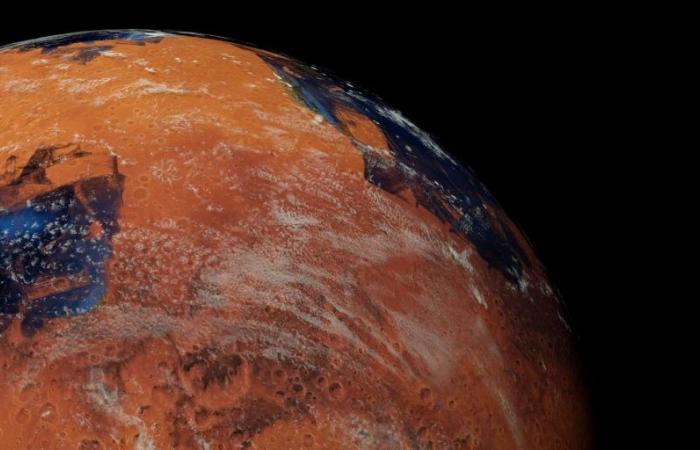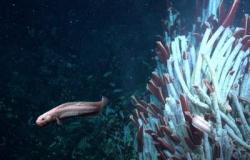In the distant past, more than 3.5 billion years ago, Mars had lakes of liquid water, and even an ocean. This past environment is attested by the discoveries made by the two NASA rovers which are currently surveying Martian soil: CuriosityCuriosity et PerseverancePerseverance. Mars was therefore habitable. But was it inhabited? This is now the question that the scientific teams are working on, following the evolution of the rovers, revolution after revolution.
Major climate change… and irreversible
For the moment, nothing in the data collected allows us to say with certainty that life ever developed on the Red Planet. But hope persists. Because the history of terrestrial life shows us that it is relatively easy to make it appear, as long as all the ingredients are there. However, everything seems to indicate that Mars presented the right conditions, for a certain time at least. Because this period of habitability suddenly ended. 3.5 billion years ago, the planet experienced a major climatic change, linked to the progressive disappearance of the Martian atmosphere: temperatures fell and the climateclimate becomes dry. The ocean and lakes dry up, leaving behind only vast expanses of sedimentsediment.
Even if we consider that tiny oases of life may have persisted, particularly within rocks in the subsoil of the planet, the surface has definitively fallen into conditions that are totally hostile to living things. But how did this radical change come about?
The water present on the surface must have evaporated very quickly
To understand, the researchers looked at the analysis of ancient lake sediments, on which the rovers now travel. In the Gale crater, which was once a lake, Curiosity found carbonates, sedimentary rockssedimentary rocks rich in carbon which have the capacity to record a lot of information about the environment (temperature, acidity, composition of water andatmosphereatmosphere…)) at the time of their deposit. In addition, their isotopic composition makes it possible to hypothesize about the processes that took place during the disappearance of this lake. The analyzes thus showed that the carbonates of Gale crater were abnormally rich in 13This 18O, which are respectively the heavy isotopes of carbon andoxygenoxygen. On Earth, such an imbalance with light isotopes, which are 12C and the 16O, is never observed. This result reveals that the degree of evaporation must have been very high, leaving the heavy isotopes behind while the light isotopes escaped into the atmosphere.
The dramatic case of the collapse of the carbon cycle
All available data can be interpreted according to two scenarios. The first suggests that the crater lake experienced alternating dry and then wet episodes before all the water evaporated. The second suggests the establishment of a very cold climate, the carbonates being deposited from water laden with salts and freezing. Two scenarios which are not necessarily exclusive. In an article published in the journal Pnasthe researchers indicate that it is likely that the two combined.
This study reveals the extent to which the cycle du carbonecycle du carbone on Mars suddenly collapsed, notably due to the absence of two major elements which, on Earth, play a regulatory role: the biospherebiosphere and the plate tectonicsplate tectonics.






